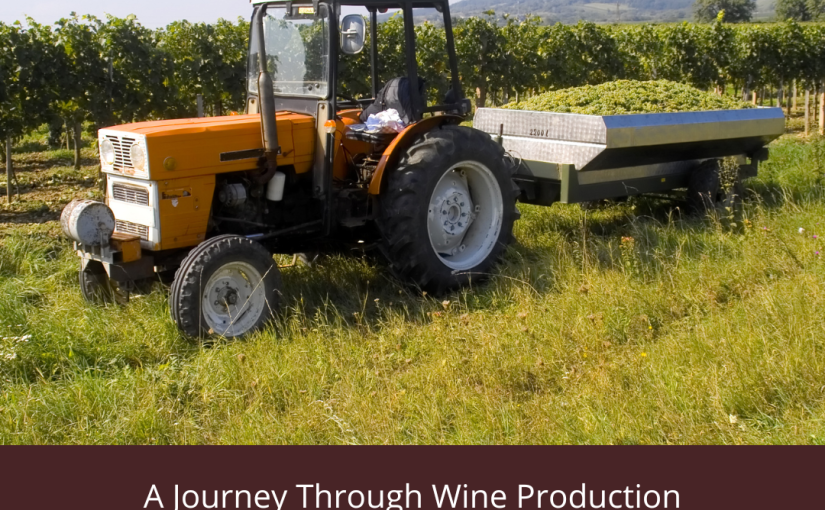Wine has been produced for thousands of years, and the process of wine production has evolved and improved over time. From grape selection to bottling, there are numerous steps involved in the wine-making process. In this article, we will take you on a journey through the wine-making process and explain how grapes are harvested, turned into wine, and the different techniques used in wine making.
Grape Selection and Harvesting
The first step in the wine-making process is grape selection and harvesting. Grapes are usually harvested in the fall, when they are at their ripest. The ideal time for harvesting depends on the grape variety, weather conditions, and the desired style of wine.
When harvesting grapes, it’s important to pick them at the right time to ensure that they have the right balance of sugar, acidity, and flavor. Overripe grapes can produce wine that is too sweet, while underripe grapes can produce wine that is too tart.
The grapes are usually picked by hand or machine. Hand picking is often used for high-end wines, while machine harvesting is used for larger vineyards. Once the grapes are harvested, they are transported to the winery for processing.
Crushing and Pressing in Wine Production
The next step in the wine-making process is crushing and pressing. The grapes are sorted and destemmed to remove any unwanted leaves, stems, or debris. Then, they are crushed to release the juice.
For white wine, the grapes are typically pressed immediately after crushing to separate the juice from the skins and seeds. For red wine, the crushed grapes are left to ferment with the skins and seeds, which gives the wine its color, tannins, and flavor.
Fermentation
After the crushing and pressing process, the juice is transferred to fermentation tanks. Yeast is added to the juice, which starts the fermentation process. During fermentation, the sugar in the grapes is converted into alcohol and carbon dioxide.
The temperature and duration of fermentation can vary depending on the desired style of wine. For example, white wine is usually fermented at cooler temperatures to preserve its fruit flavors, while red wine is fermented at warmer temperatures to extract more tannins and color from the skins.
Once fermentation is complete, the wine is transferred to barrels or tanks for aging. Aging can range from a few months to several years, depending on the wine variety and style.
Barrel Aging and Blending in Wine Production
During the aging process, the wine is stored in oak barrels or stainless steel tanks. Oak barrels can impart flavors of vanilla, spice, and toast to the wine, while stainless steel tanks preserve the fruit flavors.
After aging, the wine is blended. Blending involves mixing different batches of wine to achieve the desired flavor profile. For example, a winemaker may blend wines from different vineyards or grape varieties to create a unique blend.
Bottling
The final step in the wine-making process is bottling. Before bottling, the wine is usually filtered to remove any sediment or impurities. Then, it is bottled and corked.
Corking is an important step in the wine-making process because it allows the wine to age and develop over time. Corks can be made from different materials, such as natural cork, synthetic cork, or screw caps. Natural cork is the most traditional option, but synthetic cork and screw caps are becoming more popular due to their ease of use and consistency in quality.
Different Techniques Used in Wine Making
There are many different techniques used in wine production, and the technique used can have a significant impact on the flavor and style of the wine.
One common technique is called malolactic fermentation. Malolactic fermentation is a secondary fermentation process that converts tart malic acid into softer lactic acid. This can give the wine a creamier, buttery flavor and reduce its acidity.
Another technique used in wine making is called carbonic maceration. This technique is often used in the production of Beaujolais wines. During carbonic maceration, whole grape clusters are placed in a sealed tank and carbon dioxide is added. This process causes the grapes to ferment from the inside out, which results in a fruity and juicy wine with low tannins.
A third technique is called oak aging. Oak aging involves storing the wine in oak barrels to impart flavors of vanilla, spice, and toast. This technique is commonly used in the production of Chardonnay and Cabernet Sauvignon wines.
The wine-making process is a complex and fascinating process that involves many different steps and techniques. From grape selection to bottling, each step plays an important role in shaping the final product. The next time you enjoy a glass of wine, take a moment to appreciate the artistry and skill that went into making it. Before you enjoy that special bottle at a restaurant, download the Corkage Fee app to join our wine community and find out the corkage fees in your area!
